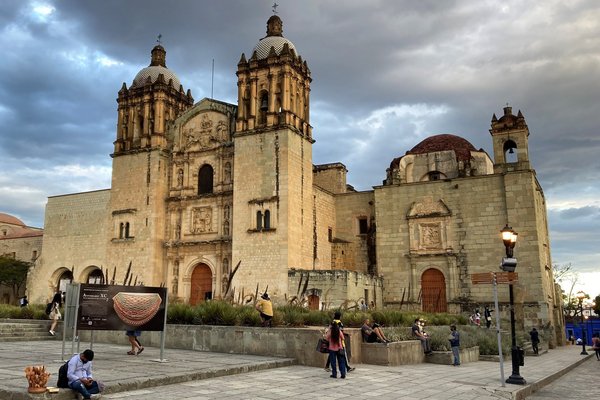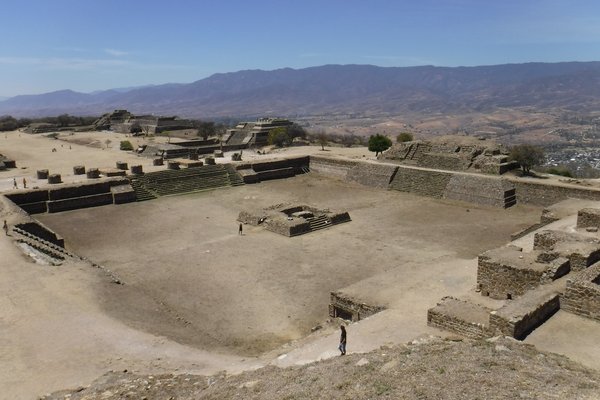Mexico
Oaxaca and Monte Alban
The Historic Centre of Oaxaca and Archaeological Site of Monte Albán are a 16th-century colonial town and a nearby pre-Columbian ceremonial centre.
Oaxaca is a typical 16th-century Spanish colonial town with a zocalo (central square), a cathedral and a strict grid building pattern. The old Zapotec site of Monte Alban dates from 300-900, when about 25.000 people lived here. Tombs, a field for ballgames and several buildings are still in good shape.
Community Perspective: Oaxaca is a pleasant city (see Clyde’s review for tips on what to see) and Monte Albán has a fine setting on the top of a flattened hill. Solivagant goes into detail about why these two sites were combined into one nomination.
Site Info
Official Information
- Full Name
- Historic Centre of Oaxaca and Archaeological Site of Monte Albán (ID: 415)
- Country
- Mexico
- Status
-
Inscribed 1987
Site history
History of Oaxaca and Monte Alban
- 1987: Inscribed
- Inscribed
- Type
- Cultural
- Criteria
- i
- ii
- iii
- iv
Links
- UNESCO
- whc.unesco.org
- Official
-
- sic.gob.mx — Monte Alban
- visitmexico.com — Visit Mexico - Oaxaca
All Links
UNESCO.org
- whc.unesco.org — whc.unesco.org/
Official Website
- sic.gob.mx — Monte Alban
- visitmexico.com — Visit Mexico - Oaxaca
News Article
- March 17, 2022 theguardian.com — Equality was key to ancient Mexican city’s success, study suggests
- May 11, 2018 mexiconewsdaily.com — WMF raises US $1 million to repair Oaxaca archaeological site
Community Information
- Community Category
- Archaeological site: Pre-Columbian
- Urban landscape: Colonial
Travel Information
Recent Connections
-
Perfect Inscriptions
1987 -
Replicas within the WHS
The Stelae known as "Los Danzantes": "O… -
Sacred Mountains
Monte Alban: "the terraces, dams, canal…
Connections of Oaxaca and Monte Alban
- Individual People
-
-
Hernán Cortés
Cortés was given the title of "Marquesado del Valle de Oaxaca". He had sent an expedition to the area in 1521 and some of the soldiers created a new settlement called "Guajaca". Cortes however wanted power over the entire region and ejected them. In 1526 he was suspended from his governorship by Ponce de Leon and returned to Spain to petition Charles V who granted him the title in 1529. This "was one of the very few seignorial hereditary domains created in the Indies" and gave him "full civil and criminal jurisdiction over his 23.000 vassals...... Although the crown had granted the title and privileges, the royal authorities made continual efforts to prevent the Marquesado from fully acquiring the political and juridical power required in the classic feudal model" (Wiki). Thus his enemies had already re-established the town as "Antequera" and Cortés was unable to maintain control over it when it was granted a city charter in 1531 leaving him, as Marquis, only in control of the surrounding lands and native towns. This "impeded the city’s growth in two important ways: it severely restricted the number of towns available for distribution in encomienda to city vecinos, and it limited the amount of land available for municipal commons and pasture". Although his main house was in Cuernavaca, there is one named "Case de Cortes" in the native town of Cuilapan (between Oaxaca and Monte Alban and originally included in the nomination but dismissed by ICOMOS as "unnecessarily redundant"!). There is also a "Casa de Cortes" in Oaxaca itself - but this is an 18th C mansion, although it is referred to in the AB evaluation - "The important religious monuments (..........), the superb patrician town houses (the home of Cortes) and whole streets lined with other dwellings combine to create a harmonious cityscape". See
-
- Geography
-
-
Pan-American Highway
Highway 190 from Mexico City passes through the city on its way to the Guatemalan frontier at Ciudad Cuauhatemoc where it becomes CA1
-
- Trivia
-
-
Reportedly haunted locations
Oaxaca City: One of most famous legends is of "Matlazihua" or "Matlacihua", an evil entity who has the form of beautiful Native American woman dressed with a large white transparent dress. She often seduces men, hypnotizes them and brings them to solitary sites where she kills them or make them go crazy. She prefers machists and drinking men. According to some versions, she is an incarnation of the Aztec goddess Mictlantecihuát; others say she is a succubus type and according to others, she is a girl ghost who was raped and murdered during colonization and now seeks revenge."See en.wikipedia.org
-
On Banknotes
Monte Alban; 20 peso; 2006 -
Hotels in Historic Buildings
The 16th Century Santa Catalina Convent has been converted by the Camino Real Group -
Built or owned by Spanish
The city of Oaxaca de Juarez, initially named Antequera, was founded in 1529 ... It is an example of sixteenth XVI century colonial city and of town planning (AB ev) -
Total Solar Eclipse since Inscription
11 July, 1991
-
- History
-
-
Zapotec civilization
Monte Alban: "the pre-eminent Zapotec socio-political and economic center for close to a thousand years" (wiki) -
Buried treasures
Treasure of Monte Alban (1932) - 500 silver and gold objects (now in State Museum of Oaxaca) -
Strikes
2006 Teachers Strike. Commenced in May 2006 with an occupation of the Zocalo. Attempts to break up the protest led to escalation in June with the creation of APPO (Asamblea Popular de los Pueblos de Oaxaca) made up of representatives of Oaxaca?s state regions and municipalities, unions, non-governmental organizations, social organizations, and cooperatives, the largest group being Section 22, the Oaxacan teachers' union. It encouraged all Oaxacans to organize popular assemblies at every level, declared itself the de facto governing authority of Oaxaca, took over TV/Radio and begun implementing its own laws. The Movement contained significant indigenous aspects including the implementation of 'usos y costumbres' (traditional usages and customs). The action continued throughout 2006 with at least 17 deaths.See en.wikipedia.org
-
Located in a Former Capital
Ancient Zapotec -
Archaeological 'Type Sites'
Monte Alban - Zapotec civilization (wiki) -
Aztec Empire
Oaxaca City: "Under Ahuitzotl, the Aztecs temporarily pushed the Zapotecs into Tehuantepec and established a permanent military base at Huaxyacac (Oaxaca city)." (wiki) Monte Alban: "Monte Albán is an outstanding example of a pre-Columbian ceremonial centre in the middle zone of present-day Mexico, which was subjected to influences from the north - first from Teotihuacan, later the Aztecs" (OUV) -
Formative stage
Monte Alban: "Founded toward the end of the Middle Formative period at around 500 BC, by the Terminal Formative (c. 100 BC – AD 200) Monte Albán had become the capital of a large-scale expansionist polity that dominated much of the Oaxacan highlands and interacted with other Mesoamerican regional states" (wiki)
-
- Architecture
-
-
Replicas within the WHS
The Stelae known as "Los Danzantes": "On the main level of the platform you will see carved stones depicting men captured in war. Called Los Danzantes, or dancers, these are replicas. The originals are in the museum on site and in the National Anthropology Museum in Mexico City." -
Rock Cut Architecture
Monte Alban (originally carved out of the mountain) -
Baroque
The Church and former monastery of Santo Domingo de Guzmán (...) is a Baroque ecclesiastical building complex (wiki)
-
- Damaged
-
-
Destroyed or damaged by Earthquake
Numerous - As recently as 1999 when Tomb 104 at Monte Alban was closed due to damamge. In particular :- 1787 San francisco Church "Earthquake damage in 1787 altered the appearance of this 16th century church", "An earthquake destroyed much of the city in 1854 and the slow rebuilding was shaken to pieces by another quake in 1931" (the 1931 event is said to have destroyed 70% of the city)
-
- World Heritage Process
-
-
Perfect Inscriptions
1987 -
Part of Cultural nomination rejected
Was originally nominated to include a 3rd element - the (unfinished) Convent of Cuilapan 10 kms south of Oaxaca. In its evaluation ICOMOS stated "(Oaxaca/Monte Ablan), situated within close proximity of one to the other, are historically complementary. On the other hand, it would appear unnecessarily redundant to include Cuilapan, which is located at some distance from the others, in a nomination to the World Heritage List.".
-
- Religion and Belief
-
-
Dominican Order
Church of Santo Domingo de Guzmán: the church and monastery were founded by the Dominican Order. The facade of the church depicts the founder of the Dominican order - cradling a church in his hand. (wiki) -
Sacred Mountains
Monte Alban: "the terraces, dams, canals, pyramids and artificial mounds of Monte Albán were literally carved out of the mountain and are the symbols of a sacred topography." (OUV) -
Carmelites
The Church and ex-monastery of Del Carmen Alto belonged to the Carmelites, who established themselves here in 1696. The complex began as a hermitage built over the teocalli of Huaxyacac. (wiki) -
Cathedrals
Cath of the Virgin of the Assump'
-
- Human Activity
-
-
Writing systems
Montealban - Zapotec Hieroglyphs -
Gold production
-
Locations for playing sport
(Monte Alban) Pre-Columbian Ball court -
Man-made Terraces
Monte Alban: "the site is characterized by several hundred artificial terraces" (wiki)
-
- Constructions
-
-
Bandstand
At Oaxaca's Zocalo -
Passage of the Sun
What appears to be a "Zenith Tube" is built into the base of Building P at Monte Alban. "The sun is visible through this perpendicular shaft for several weeks around the time of the zenith passage" -
Theatres and Opera Houses
Teatro Macedonio Alcalá Is a working theatre and also houses a collection of romantic art.[3] Built between 1903 and 1909, it was originally named the Luis Mier y Terán Theater. The design is typical of the Porfirio Díaz period ending the 19th century and beginning the 20th. (wiki) -
Tombs
Monte Alban -
Historical Organs
Oaxaca Cathedral: a locally built baroque pipe organ, parts of which date to 1711-1712 (wiki) + Basilica of Nuestra Señora de Soledad: The west gallery contains a baroque pipe organ dated 1686, restored to playing condition in 2000. (wiki) -
Pyramids
Monte Alban -
Stelae
Monte Alban: stelae that show glyphic Zapotec writing; Danzantes
-
- WHS on Other Lists
-
-
World Monuments Watch (past)
Monte Alban Archaeological Site, Oaxaca (2008) -
U.S. Ambassadors Fund
Preservation of the Zapotec Archaeological Collections and Sites in Oaxaca (2002) -
Memory of the World
Codices from the Oaxaca Valley
-
- Timeline
-
-
Built in the 16th century
Oaxaca was founded in 1529 and "is a perfect example of a 16th-century colonial town." (Unesco) -
Built in the 3rd century
The history of Monte Alban is described in 5 phases. Phase I : 500-200BC (It emerges as the "regional capital"). Phase II : 200BC -300AD (The "site begins to assume much of the appearance it presents today"). Phase III : 300AD -750 AD. (Becomes involved "in some way" with Teotihuacan "the last period of major construction at Monte Alban when most of the structures now visible were completed.") Phases IV + V : 750 -1520AD. (The public areas are abandoned but it possibly continues in use as a necropolis. ) SeeSee inside.mines.edu
-
- Science and Technology
-
-
Astronomy and Astrology
Monte Alban: It is believed that building “J” had an astronomical relation/ significance. (wiki) -
Botanical Gardens
Jardin Etnobotanico de Oaxaca -
Universities
Oaxaca: original building to house the Universidad Aut?noma Benito Ju?rez (now only the law department)
-
News
- theguardian.com 03/17/2022
- Equality was key to ancient Mexica…
- mexiconewsdaily.com 05/11/2018
- WMF raises US $1 million to repair…
Recent Visitors
Visitors of Oaxaca and Monte Alban
- Adrian Turtschi
- Alberto Rodriguez Gutierrez
- Alejandro Lau
- Alexander Barabanov
- Alexander Lehmann
- Ali Zingstra
- Allegrazwindow
- ALS
- Argo
- Artur Anuszewski
- Aspasia
- Atila Ege
- basementonline
- beckyjo27
- Bill Maurmann
- brendairala
- brornt
- Carlo Sarion
- Carlos Sotelo
- Caspar
- CeeMon
- Cheryl
- Christine
- Clyde
- Csaba Nováczky
- ctravel
- CynthiaSam
- czesioszpachelka
- Daniela Hohmann
- dave wood
- David Aaronson
- DavidS
- David Scott King
- Deffra
- Delphine Delaunay
- DouglasR
- Elf21
- Elis
- Els Slots
- Erfe91
- Eric Lurio
- Erik Jelinek
- Fan Yibo
- Feldhase
- Francky D'Hoop
- Frédéric M
- George Gdanski
- GeorgeIng61
- GerhardM
- giloudepuertorico
- Grendel Gongan
- Hammeel
- Harry Mitsidis
- headventure
- Iain Jackson
- Iara
- ih0000
- Jana and Matt
- janis
- Jarek Pokrzywnicki
- Javier
- Javier Coro
- Jawnbeary
- Jens
- Jezza
- Joel on the Road
- jonathanfr
- Jon Opol
- KarenBMoore
- Kasper
- Kbooth
- Ken DJ
- Kevin McFarland
- Kurt Lauer
- La Concy
- Loic Pedras
- Lucas Del Puppo
- Ludvan
- Luis Filipe Gaspar
- Lukasz Palczewski
- Mahuhe
- Malgorzata Kopczynska
- Martin
- Matthewsharris
- M.HATADA
- Michael Ayers
- Michael Novins
- Miguel Marquez
- Mikko
- Milan Jirasek
- MMM
- Monica66
- montgomw
- MoPython
- Morodhi
- Mstrebl1990
- nan
- Niall Sclater
- Nick Kuzmyak
- Nihal Ege
- palka25
- Paola Laura
- Patrik
- Paul Schofield
- Philipp Leu
- Philipp Peterer
- Pierre T
- Pieter Dijkshoorn
- Pincze
- Pink Bunny
- puessergio
- Ralf Regele
- Randi Thomsen
- Reza
- Rick Ohm
- Roger Ourset
- Roman Bruehwiler
- Roman Raab
- Samy G
- saraleonela
- Sclowitz
- Sergio Arjona
- Shandos Cleaver
- Shannon O'Donnell
- Simonf
- Slavi
- Solivagant
- Spiceboy
- Stanislaw Warwas
- Szucs Tamas
- triath
- ValiaVeweth
- vino4vino
- Walter
- Westwards
- Wojciech Fedoruk
- Zizmondka
- Zoë Sheng
- ZZSong
Community Reviews
Show full reviews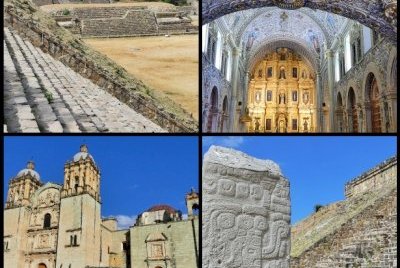
I visited this WHS in December 2021 before and after a very long drive full of hairpins to Oaxaca's far-away beaches. This WHS is practically 2 WHS in 1, yet another colonial town packed with beautiful churches with intricately decorated interiors and another pre-Columbian archaeological site.
Both sites are very enjoyable and we were glad we had allowed some 3-4 days in total even though if pressed for time both can be easily covered in one full day with the Yagul WHS in the late afternoon. Monte Alban is best visited early in the morning not only because of the lighting for photography but also because there is no shade anywhere apart from under a couple of trees and it can get very hot here. We were there quite early, mostly because entrance was limited to a low number of visitors which was monitored already going uphill with a makeshift traffic light. By using public transport, you get to jump all the queing vehicles uphill, at least during COVID restriction times. Another important reason to wake up early was to beat any protestors blocking all the main roads and literally trapping anyone inside the city, which seems to be quite a recurring problem here.
Practically we were among the very first visitors and having printed a small map beforehand, we headed straight towards the Main Plaza to enjoy the panoramic views from the North and South Platforms void of people. The most striking building was the "pyramid-like" structure …
Keep reading 0 comments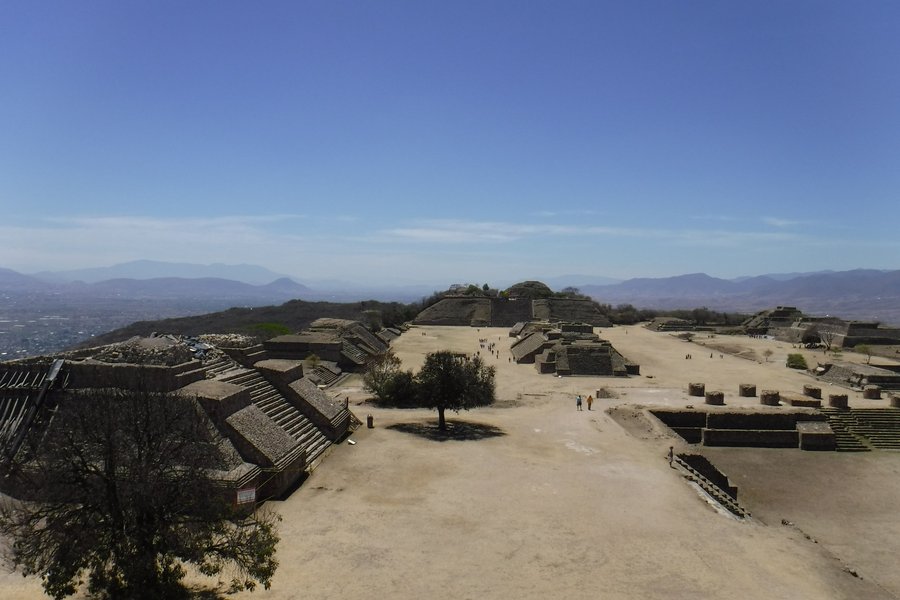
Oaxaca, the capital and largest city of the eponymous state, has a remarkable colonial centre. I spent six days in this region in March 2019, often using the city as a base camp for excursions to the surrounding area.
The colonial centre is noteworthy for its rectilinear urban plan and massive cantera stone architecture. The Zócalo (Plaza de la Constitución), one of the few tree-lined areas in the centre, is particularly lively and very pleasant. It is bordered to the north by the gigantic Catedral Metropolitana de Oaxaca. The current building, dating from 1733, has a stunning Baroque façade, but a rather banal interior. A little to the north on the pedestrian Calle Macedonio Alcalá, lies the breathtaking Templo de Santo Domingo de Guzmán, one of the most beautiful churches I have visited in Mexico. Exuberant bas-reliefs cover the walls and ceilings, notably illustrating the Dominican family tree. It is a true Baroque masterpiece. The last remarkable church, located west of the Zócalo on Avenida de la Independencia, is worth a visit. The Basílica de Nuestra Señora de la Soledad, completed in 1690, is also in Baroque style.
I used the next four days to visit the Tehuacán-Cuicatlán Valley and the Prehistoric caves of Yagul and Mitla in the Central Valley of Oaxaca. I opted for an ecotourism company based in Oaxaca for the first one, whereas the Central Valley is easy to visit on your own. We not only strolled through Yagul, but also visited Mitla and Hierve el …
Keep reading 0 comments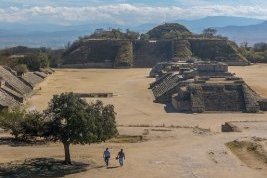
After living in Oaxaca's city center for six months, I can without a doubt recommend the food, culture, and history of this region to any traveler heading to the region. Oaxaca itself has a long history, but is once again reinventing itself as the center of Mexico's most exciting culinary foodie scene. It was already considered the birthplace of some of Mexico's most iconic dishes (seven different types of mole being among them), and now this Spanish colonial town has fascinating fusion dishes, alongside a mezcal tourism industry that makes it a hit with those who not only love history, but food tourism as well.
Outside of the tightly packed downtown, where I loved the sheer number of boutiques and restaurants, is Monte Alban. It's incredibly convenient to the city (a mere 20 minutes by bus that leaves near the Zocolo), and offers sweeping views of the region.
As a site of ruins, Monte Alban is nice, but not my favorite Mexican ruins. I have extensively traveled Mexico, from the Yucatan Peninsula with curious kids to the Baja Peninsula, and I've seen many ruins. These ones are not quite as impressive as others, but they are the finest example of Zapotec ruins. From the Maya ruins of the Yucatan to the Aztec ruins near Mexico City, Monte Alban represents a very different culture and history, and that alone (plus the views) makes it worth a visit. The museum on site was a pass for me, but if you …
Keep reading 0 comments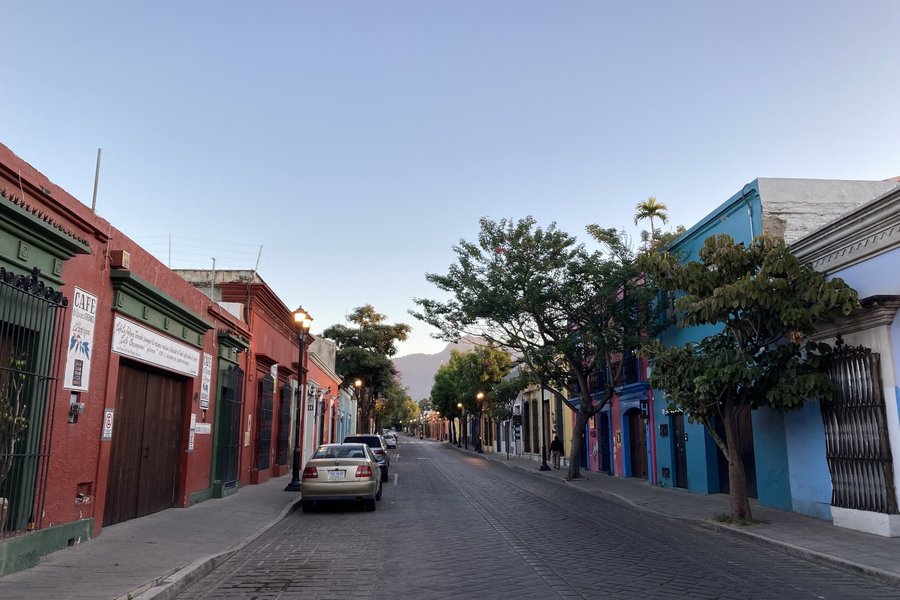
Oaxaca mermerize me because of its great churches. The catedral, with the tipical sismic key, the square facade and its baroche ornamentation. The Santo Domingo church is an amazing building because of its size and exquisite decoration. It does not have a great "chapel of the holly rosary" as many Dominican's churches. and of course the culture made the town a great experience. What surprise me, was how close is from Monte Alban, wich is another Unesco site.
The Valley of Oaxaca is full of fantastic sites. The open roof church and convent (Dominicans) and Mitla, another Zapotecas site, plus the cementeries made the area an Unesco destination.
Keep reading 0 comments
I went to visit Oaxaca when i was 16yrs old. My grandmother was born and raised in a small town in Oaxaca, and she is Zapotec. As a matter of fact, Spanish was her second language. We walked through downtown and went to a night festival in one of the squares in front of a church. It was so great. Then when we went to Monte Alban, i just could not believe where i was standing. It was breath taking. To think that people from centuries ago could create something so wonderful, and so strong that it would last until now!i can say that i stood on history. It was almost scary to think of the things that went on when it was habituated by the Mayans. I definetly recommend going to experience it for yourself.
Keep reading 0 comments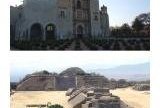
The linkage of the apparently disparate sites of Oaxaca and Monte Alban in a single inscription is unusual. Each place certainly has its merits compared with others on the List; Oaxaca is as good as many other colonial towns and Monte Alban as good as many other pre-Hispanic sites. Neither is perhaps is the very “best of the best” but each should surely have been able to “hold its own” in a single inscription, given the ICOMOS/ UNESCO record for interpreting “Universal Value”? So what is the significance of Mexico linking the 2 sites in this way? 1987 was, by the way, a “great year” for Mexico in that it got 6 sites inscribed (this can’t happen again now that yearly nomination limits have been imposed). Interestingly it also proposed another linked “colonial/pre-Hispanic site” – Puebla and Cholula but, on this occasion, Cholula was rejected as not being “significant” enough in its own right.
One possibility for the dual nomination was as a device to get more sites inscribed! But I think it is more than this. Every country’s Inscribed (and Tentative) List says quite a lot about how it sees itself and wants to present itself to the outside world (Think Netherlands and its “fight against the waters”, think UK and its industrial/trading history etc). Mexico is proud of its “fusion culture” and a number of its WHS emphasise this aspect. Queretario’s (see my review) nomination documentation describes it as “an exceptional example of a Spanish town whose layout …
Keep reading 0 comments
In May, 2003, I had the wonderful experience of visiting Monte Alban! Saying "what a place!" does not do justice. We had a great tour guide showing us around and spent about 5 hours with him. We could have visited that many days. It is a truly awesome site (and this is not the only World Heritage Site I have visited). Just trying to imagine the history of the place is overwhelming. I am delighted that it is so well protected, well managed, and opened to the public. I hope to visit again. Gloria
Keep reading 0 comments
